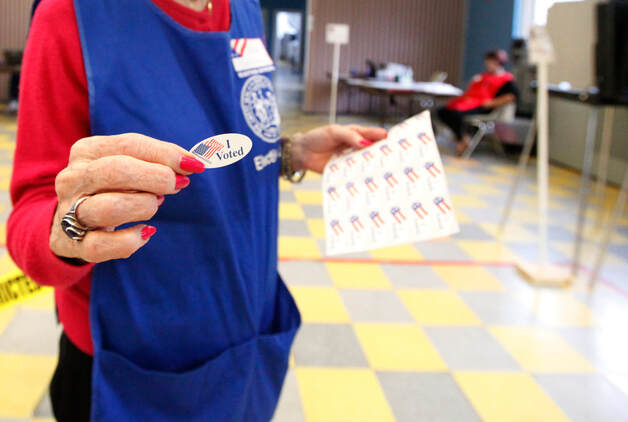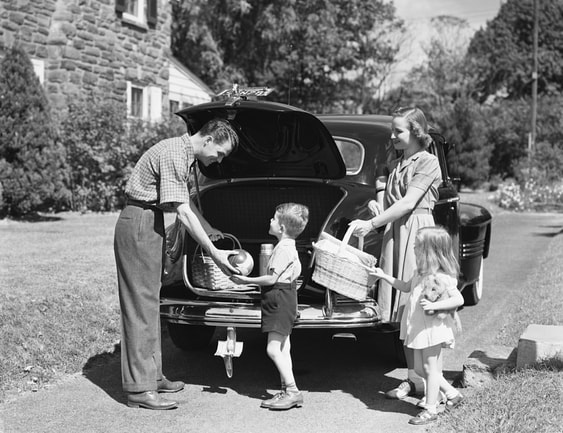|
For one reason or another, you may need to take some money out of an IRA before reaching retirement. You can withdraw money from an IRA at any time and for any reason, but it's important to keep in mind that most IRA withdrawals are at least partially taxable. In other words, you'll owe regular income tax on the amount. In addition, the taxable portion of a withdrawal taken before age 59 1/2, which is called an "early withdrawal," will be hit with a 10% penalty — unless you qualify for an exception. The exceptions apply to traditional IRAs, SEP-IRAs and SIMPLE-IRAs. (However, some early withdrawals from SIMPLE-IRAs are hit with a 25% penalty rather than the standard 10% penalty. For simplicity, the rest of this article will ignore that higher 25% rate.) Also, be aware that different rules apply to withdrawals from Roth IRAs and qualified plans, such as 401(k) plans. Exceptions to the Penalty So what are the exceptions to the 10% early withdrawal penalty? Let's take a look: 1. Withdrawals for medical expenses. If you have qualified medical expenses in excess of 10% of your adjusted gross income (AGI) in 2020 (and 2019) early IRA withdrawals up to the amount of that excess are exempt from the 10% penalty. To take advantage of this exception, you don't need to trace the withdrawn amount to the medical expenses. However, those expenses must be paid in the same year during which you take the early withdrawal. 2. Substantially equal periodic payments (SEPPs). These are annual annuity-like withdrawals that must be taken for at least five years or until you reach age 59 1/2, whichever comes later. The rules for SEPPs are complicated, so you may want to get your tax advisor involved to avoid pitfalls. 3. Withdrawals after death. Amounts withdrawn from an IRA after the IRA owner's death are always free of the 10% penalty. However, this exception isn't available for funds rolled over into a surviving spouse's IRA or if the surviving spouse elects to treat the inherited IRA as his or her own account. If the surviving spouse needs some of the inherited funds, they should be left in the inherited IRA (in other words, the one set up for the deceased spouse). Then, the surviving spouse can withdraw the needed funds from the inherited IRA without any 10% penalty. 4. Withdrawals after disability. This exception applies to amounts paid to an IRA owner who is found to be physically or mentally disabled to the extent that he or she cannot engage in his or her customary paid job or a comparable one. In addition, the disability must be expected to:
6. Withdrawals for qualified higher education expenses. Early IRA withdrawals are penalty-free to the extent of qualified higher education expenses paid during the same year. The qualified expenses must be for the education of:
8. Withdrawals by military reservists called to active duty. This exception applies to certain early IRA withdrawals taken by military reserve members who are called to active duty for at least 180 days or for an indefinite period. 9. Withdrawals for IRS levies. This exception applies to early IRA withdrawals taken to pay IRS levies against the account. However, this exception is not available when the IRS levies against the IRA owner (as opposed to the IRA itself), and the owner then withdraws IRA funds to pay the levy. Before and After a Withdrawal With some exceptions, IRA owners who make IRA withdrawals before age 59 1/2 must file a form with their tax returns. Specifically, they must file Form 5329, "Additional Taxes on Qualified Plans (Including IRAs) and Other Tax-Favored Accounts." If you think you qualify for an exception to the 10% penalty on early traditional IRA withdrawals, consider involving your tax pro before making a big early withdrawal. You want to be sure that you do indeed qualify. Better safe than sorry! Early Withdrawal Downsides Even if you qualify for an exception to the 10% early withdrawal penalty, remember that you still have to pay regular income tax on the amount. And you'll lose out on the benefit of future tax-deferred compounding growth on the withdrawn funds.
Choosing the investments that are right for you is always a little bit of a guessing game. Of course, investing is inherently risky, and the unknown future is the main cause of that risk. But it’s certainly easier to decide how to diversify your portfolio and grow your retirement income when you understand the difference between the four most common investment types. Here’s our guide sharing basic definitions as well as some insight into these investments and the risks associated with each.
Definition of a Bond A bond is issued to fund a special project by a company or at multiple levels of government. This could be research and development, building roads and schools, or even a war effort. Every person or entity that invests in a bond is essentially getting an “I.O.U” promising their investment will be paid back by a certain date, called the maturity date. You also receive a coupon for a certain interest rate that is a fixed rate of return on the bond. At regular intervals until the bond matures, usually once every six months, you as the bondholder will receive a payment of the coupon rate of interest on your investment. When the bond maturity date arrives, your initial investment is paid back all at once. Buying and Selling Investment Bonds Another important notion that relates to bond investment is the concept of yield. This becomes relevant when you want to buy or sell a bond that has already been issued but hasn’t reached maturity. Yield is impacted by the difference between the coupon rate of the bond and the current coupons for new bonds in the market. This difference affects the price investors are willing to pay, and the profit the buyer will make on the bond. Bonds must be purchased through a broker, so talk with your broker more about this concept to find the right investment for you based on current and projected market conditions. Bond Investment Risks Generally, municipal and government bonds are considered an extremely safe investment. Some states even have laws that require governments to make bond payments before using their budget for any other purpose. It’s extremely rare for a city, state, or the Federal government to default on a bond. Corporate bond issuers have a much higher risk of defaulting, but these investments also come with a significantly higher yield than a municipal or government bond. Always remember that all investment involves the risk of loss, even tried-and-tested options like a bond. Definition of Stock Each share of stock is a portion of ownership in a publicly traded company. It’s important to know that in most cases, this doesn’t guarantee you any input or managerial oversight in the company, unless that is a separate agreement you reach with the business, like in a startup or as an employee. Some stock does come with voting rights that allow shareholders to have some high-level control over the company’s direction. But generally buying stock is a vote of confidence in the company’s direction and future as it exists. Buying and Selling Stock Like bonds, stocks must be purchased through a broker. Full-service brokers are the financial experts we picture on the trading floor. They usually provide advice about finances and investment to their clients. Online brokers that offer less support bring a more modern approach and follow instructions to allow individuals direct access and control over their own investments. Stock Investment Risks The risks of stock investment are legendary, as are the returns. Overall, many professionals would agree one of the riskiest parts of investing in stocks is the role of emotions like greed or fear. Many individuals establish sell orders in their portfolios to automatically sell a stock when a certain rate of return is guaranteed. This takes some of the emotion out of the equation. As for the risks of losses, it’s important to consult with a financial professional about what percentage of your savings to invest in volatile options like stock, and how much to keep in options that are more stable. This will prevent fear from crippling you even at the lowest points of the market. Definition of an Exchange-Traded Fund Investors who are active in the stock market but looking for alternatives may consider an exchange traded fund (ETF). One share of an ETF represents a much smaller investment in the many stocks and bonds that are part of the fund. They work by tracking a specific index and aggregating some or all the bonds and stocks that are available in that index at any time. These could be relevant to industries like oil, or to certain nations and emerging markets. Investing in an Exchange-Traded Fund ETFs are traded through both traditional and online brokers, just like stocks. The price of each share of an ETF will go up and down throughout the day depending on the performance of the holdings in the fund. This option allows investors to distribute the risk of investing in a certain industry across many holdings, while also having the advantage of being able to trade directly with other investors based on real-time conditions in the market. ETF Investment Risks Just as the collective nature of the ETF brings benefits, it also brings some limits and risks. A lack of liquidity means you can’t only choose some of the investments in the fund to be part of. This is important to consider when choosing funds that are industry or region-specific—are you comfortable with the full scope of risk in the fund, and how the risk might change in the future? Depending on the way the fund is managed, these options may also come with high fees. Talk with your broker to get a clear picture of the fees you may be charged and why. Definition of a Mutual Fund Like an ETF, a mutual fund pools money from many investors to purchase stocks, bonds, and other investments. Investing in a share of the mutual fund represents a partial investment in all these holdings. However, a mutual fund is not publicly traded on the market. A mutual fund is also a company, led by a fund manager who is elected by a board of directors to make the best investment decisions for everyone involved in the fund. This is very different from an ETF, which functions by passively aggregating investments in a certain index without as much consideration of their potential performance. Investing in a Mutual Fund In 2018, 80% of mutual fund investors were investing through a retirement plan like 401(k) or IRA. In part, this is because participating in a mutual fund requires a minimum investment threshold of $1,000 or more, not just the cost of one share. It’s also important to know that trying to sell your retirement account shares in a mutual fund before age 59 ½ may come with penalties. Talk with your plan administrator or financial adviser to learn more. Individuals can also buy shares of a mutual fund outside a retirement account, but your transaction will be with a broker who owns shares or with the fund itself. The same is true when you redeem your shares in the fund—you will only be transacting with the fund itself or a broker who represents the fund, not trading directly with other investors. Mutual funds are only traded once per day, after the stock market closes at 4pm ET. Mutual Fund Investment Risks One of the biggest risks of this investment type is fees. From transaction fees to administrative fees to trading fees, it’s important to understand why each charge is necessary. It’s also a good idea to annually benchmark your mutual funds’ performances against other mutual funds. If your fees are higher or your returns are lower than the average, it might be time to talk with your broker or adviser about the benefits of reallocating some or all of those funds into a different investment. These are the main investment types that help individuals grow their wealth and prepare for retirement and other periods of life where money is needed. Some of these assets are easy to manage and sell while others require a lot of oversight but may yield a higher return. For clarification on any of these points or to understand what mix of investments is right to grow and sustain your income, we recommend consulting an experienced professional about your goals and willingness to be exposed to risk. Did you know you can sell all or a portion of a life insurance policy, even term insurance? Selling an unwanted life insurance policy is no different than selling your car, home or any other valuable asset that will create immediate cash. Contact us today to learn more. This article was written by Leo LaGrotte from Life Settlement Advisors [email protected] 317-863-5936 As the Founder, President, and CEO of Life Settlement Advisors, Leo has spent more than 18 years working in the life settlement and viatical settlement industry. Leo’s career began as an investment advisor, operating his own independent firm for seven years. Through his work as an investment advisor, and as the President of Life Settlement Advisors, Leo has gained a broad knowledge of investments, life insurance, and the analysis and pricing of life insurance policies. Is it time to start a new beginning? We are starting a new decade – 2020. And, to me it seems evident that it is time for me at eighty-four and a half years to begin thinking of what I will do and accomplish in the remaining years of my life.
To begin, I left my old life behind in Indiana, and move lock, stock, wife, and computer files to Texas. This move, by itself, was a significant change in my existence along with the climate and home environment, but it was even more of a change in my lifestyle. The relaxed and casual style of living here in Texas takes some adjustment. The people are outwardly very friendly, but that applies primarily to terra-firma, but is not evident on the highways and streets. These folks are in a constant state of hurry-up on the roads. And, in their pick-up trucks, they are a sight to behold and a challenge to beware of. The historical significance of Texas is evident everywhere. This is a state deeply proud of its inheritance. The American and Texas Flags are prominently and proudly displayed everywhere. This not only occurs on holidays, but is evident year ‘round. These folks are proud of their history and like to show it. And, any discussion of disturbing the sanctity of a place like the Alamo is a kin to starting a war. Back to my original thought process. How does someone at my tender age of the mid-eighties make the adjustment and keep a significant stance of some importance in their lives? I have come to the realization, you don’t do it by ignoring your surroundings and what’s going on in the community. I suppose it is a part of my genes to want to take a part and have a say. Voting has been and continues to be an essential part of my life. It is difficult for me to understand why anyone who values their lifestyle would ignore the essential and basic value of their ballot. It is difficult, in my estimation, to want to complain about or compliment leaders by ignoring the first Tuesday in November. There is not time left, nor is there a need to dismiss a lifetime of learning to start over. A lesson I have taught myself is history has a way of repeating itself on a regular basis. All anyone has to do is to stay actively alert and be patient. The past will catch up with you, and more than likely, you have been there before. Remembering is an essential part of growing older. Keeping an active mind is essential to continuing the future growth pattern. Keeping a sense of humor pays dividends. The world seems to want to continue drawing attention to calamity at every turn. There is no need to try to stem the tide of adverse news – it seems to pop-up at every juncture. So, it is hard to ignore, but you can smile and know this too will soon pass, as it always seems to do. Even the worse days have their sunsets, and the moon and stars seem shine as brilliant as before, I know this to be true because I have taken notice of it for years. Minding ones physical and mental needs plays an important role in the future, as well. It pays dividends to listen to those who have provided the necessary information, lessons and medications to keep you active and alive through the years. They are there as helpful and useful resources to be relied upon and to stimulate your continued growth with healthful advice and action. I know personally that I would not have lived as long and well as I have without their constant nagging and assurance of success. It helps significantly if you have planned ahead financially to maintain the where with all that is needed to assure the later years of life. Insurance can certainly go a long way toward that sound investment necessary in future years. The interesting thing to me is how easy it is to take those money steps at the early age, and let the wealth continue at a normal rate of growth until needed. There never seems to be as much as you desire, but it sure helps knowing that there is an investment that will pay dividends when needed. To sum up the purpose of this article, it is not necessary to start over – just continue an active pattern of life that has held you in good stead through the earlier years of a lifetime. No matter what time is left, or the changes that will occur, know lessons earned and learned are there for the taking…then do so! You have lived a lifetime – keep on truckin’, as they like to say here in Texas! This article was written by Norm Wilkens Norm Wilkens is a nationally recognized speaker and writer, Norman Wilkens has traveled to forty-seven of the fifty states speaking on topics of marketing, advertising and public relations. His most noteworthy subjects include: Healthcare Marketing; Multi-generational travel and Baby Boomers - their contribution to society and economics. He is presently serving as Midwestern Contributor to California’s AAA WESTWAYS Magazine. Among Wilkens’ current activities are the Butler University Alumni Board of Directors; Butler’s Central Indiana Alumni Chapter Board; Chairman of the Board of Visitors for the new Communication College of Butler; Board of Directors of Ruth Lilly Educational Foundation; Salvation Army of Indiana Advisory Board and as an Elder at Second Presbyterian Church of Indiana. The Setting Every Community Up for Retirement Enhancement (SECURE) Act contains a number of favorable provisions that will help Americans save more for retirement. However, the new law also contains an unfavorable provision that will affect nonspouse IRA beneficiaries who inherit accounts with substantial balances. As a result, some carefully constructed estate plans will be damaged. Here's the story.
Old Rules Before the SECURE Act, the required minimum distribution (RMD) rules allowed a nonspouse beneficiary to gradually drain inherited IRAs over the beneficiary's IRS-defined life expectancy. For example, Ann is 40 years old when she inherits her elderly Aunt Lilly's $500,000 Roth IRA. The current IRS life expectancy table estimates that Ann will live for another 43.6 years. Ann must start taking annual RMDs from the inherited account by dividing the account balance as of the end of the previous year by her remaining life expectancy as of the end of the current year. So, her first RMD would equal the account balance as of the previous year end divided by 43.6, which would amount to only $11,468, or 2.29% of the balance ($500,000 divided by 43.6 years). Her second RMD would equal the account balance as of the end of the following year divided by 42.6, which translates to only 2.35% of the balance. And so on until the account is fully depleted. Before the SECURE Act, the RMD rules allowed nonspouse beneficiaries to keep an inherited account open for many years and reap the tax advantages for those years. With an IRA, this is sometimes called the "stretch IRA" strategy. It's particularly advantageous for inherited Roth IRAs, because the income those accounts produce can grow and be withdrawn free from federal income tax. So, under the pre-SECURE Act RMD rules, a stretch Roth IRA could provide protection from future federal income tax rate increases for many years. New Rules The SECURE Act requires most nonspouse IRA and retirement plan beneficiaries to empty inherited accounts within 10 years after the account owner's death. This is an unfavorable change for beneficiaries who would like to keep inherited accounts (generally traditional and Roth IRAs) open for as long as possible to continue reaping the tax advantages. This change won't affect account beneficiaries who want to quickly drain inherited accounts or account owners who empty their accounts during their retirement years. It only affects certain nonspouse beneficiaries who want to keep inherited accounts open for as long as possible to reap the tax advantages. This change also won't immediately affect accounts inherited by a so-called "eligible designated beneficiary." This term refers to:
Important: Under the exception for eligible designated beneficiaries, RMDs from the inherited account can generally be taken over the life or life expectancy of the eligible designated beneficiary, beginning with the year following the year of the account owner's death. The unfavorable changes to the RMD rules under the SECURE Act are generally effective for RMDs taken from accounts whose owners die after 2019. The RMD rules for accounts inherited from owners who died before 2020 are unchanged. For More Information Nonspouse beneficiaries should be aware of the changes to the rules for draining inherited accounts. If you inherit a traditional or Roth IRA with a substantial balance, contact your tax advisor to determine if the unfavorable 10-year rule applies to you and to answer any other questions you have about minimizing taxes on distributions. In addition, individuals who were relying on the Stretch IRA strategy as part of their estate plan will have to rethink things. Your tax advisor can help with that, too. This article was written by TMA Small Business Accounting The TMA Small Business Accounting, P.C. staff have been delivering professional services to small businesses in Central Indiana for over 20 years. Having worked with hundreds of small business clients, we have significant expertise with a wide variety of service businesses in Indiana. We have especially strong experience and expertise in working with businesses in the healthcare (medical, dental, etc.) and foodservice (restaurants, caterers, etc.) industries. Contact Info: (317) 571-8080 tmasmallbusinessaccounting.com WOW… that is the average annual cost in 2019 to receive services in a semi-private room in an Indiana skilled nursing facility, according to the Indiana FSSA.
Let me give you a few other startling facts.
So, as long as everyone has a couple hundred thousand dollars hanging around, they should be okay. But, what if there is a spouse at home? Will he/she have enough cash to stay in the world that they have become accustomed to? Let's talk. I just attended a meeting where an elder law attorney was speaking about long term care costs and also Medicaid. He acknowledged that there are far more people with too few assets to cover these costs. That is when Medicaid comes in... after you are impoverished. He then spoke of the declining number of insurers in the long term care arena. And, he spoke highly of the new asset based products and life and annuity products with accelerated benefits. As I sat there listening, I still am perplexed as to why more Americans are not taking advantage of these new products. We all know that a long term care type of emergency can devastate one's retirement plan. We all work hard to develop a steady income in retirement that is safe and stable But, most have not considered that they might have to change their addresses to the $78,324 per year semi private room. If you have a long term care policy... congrats. If you don't you will probably never purchase one. If you have the new breed of asset based long term care/chronic illness products, I salute you. If you have an additional $200,000 - $400,000 of cash hanging around to pay for the room, I salute you. But, if you feel a little vulnerable and would like some information about these products and strategies? Let us know, and we will put you in contact with a member of The Safe Money Places Agent Network that is licensed in your state. This article was written by Raymond J. Ohlson CLU, CRC, CEO & President of Safe Money Places International, LLC Mr. Ohlson entered the insurance business while completing his Bachelor of Science Degree at Ball State University. He quickly qualified for the Million Dollar Round Table (MDRT) of which he is a Life Member. He also received his Chartered Life Underwriter (CLU) designation from the American College in Bryn Mawr, Pennsylvania.  Nearly everyone should consider updating his or her estate plan. This is smart advice even if you’re not currently exposed to the federal estate tax. Year end can be a convenient time to reflect on major life changes and plan for the future, including devising strategies to minimize taxes. Reasons to Review Your Plans For 2019, the unified federal estate and gift tax exemption is $11.4 million (effectively $22.8 million for married couples). Thanks to these generous exemptions you may not currently be exposed to the federal estate tax. Nearly everyone should consider updating his or her estate plan. This is smart advice even if you’re not currently exposed to the federal estate tax. Year end can be a convenient time to reflect on major life changes and plan for the future, including devising strategies to minimize taxes. Reasons to Review Your Plans For 2019, the unified federal estate and gift tax exemption is $11.4 million (effectively $22.8 million for married couples). Thanks to these generous exemptions you may not currently be exposed to the federal estate tax. However, there’s a distinct possibility that today’s favorable estate and gift tax exemptions won’t last. They’re set to expire in 2026 under current law, unless Congress extends them. However, some lawmakers have expressed interest in ending them sooner, along with other unfavorable tax changes. So, depending on what happens in Washington, you could be exposed to the federal estate tax in the near future, after all. Plus, lower exemption amounts may apply at the state level if you live in a state with a death tax. You also might need to update your estate plan for nonfinancial reasons. Examples include changes in marital status, the birth or adoption of a child, the death of a loved one, the launch of a business venture, the acquisition of new assets (or debts) via a purchase or inheritance, and even a lottery windfall. Here are some steps to consider. Establish Your Will First and foremost, it’s essential to have your last will and testament drafted. If you die intestate (without a will), the laws of your state will determine the fate of your minor children and who will inherit your assets. A written will makes your wishes known. There are three main purposes for putting together a will:
Create a Living Trust For people with significant assets, a fundamental estate planning goal is to avoid probate, if possible. Probate is the court-supervised process of:
Note: You should also have a so-called “pour-over will” drawn up. This document stipulates that assets that aren’t officially owned by the trust still belong under its umbrella. Items such as vehicles, artwork, jewelry and collectibles may be covered. The trust document should 1) name a trustee to manage the trust’s assets after you die, and 2) specify which beneficiaries will get which assets from the trust and when. Because a living trust is revocable, you can change its terms at any time, or even unwind it completely, as long as you’re alive and legally competent. For federal income tax purposes, the existence of the living trust is completely ignored while you’re alive. As far as the IRS is concerned, you still personally own the assets that are legally held by the trust. So, you continue to report on your personal tax returns any income generated by trust assets and any deductions related to those assets (such as mortgage interest on your home). For state-law purposes, the living trust isn’t ignored. That’s why, if set up properly, a living trust avoids probate. When you die, the assets in the living trust are included in your estate for federal estate tax purposes. However, thanks to the unlimited marital deduction privilege, assets that go to your surviving spouse aren’t included if he or she is a U.S. citizen. Important: If you set up a living trust, you must transfer to the trust legal ownership of the most important assets for which you wish to avoid probate (typically homes and other real property). Many people set up living trusts and then fail to actually transfer ownership of their assets. When this happens, the probate-avoidance advantage is lost unless your estate’s executor can argue that the problem is cured by your pour-over will. Update Your Beneficiary Designations A will or living trust document doesn’t override beneficiary designations for:
Important: It’s also important to consider naming one or more secondary (contingent) beneficiaries to inherit these accounts in the event the primary beneficiary dies before you do. As a general rule, whoever is named on the most-recent beneficiary form will get the asset automatically if you die, regardless of what your will or living trust document might say. So, if you’ve failed to update your beneficiary designations, don’t assume that your will or living trust will protect your heirs. Fix the problem now while it’s on your mind. Beyond ensuring that your money goes where you want it to go, another advantage of designating beneficiaries is that it avoids probate. That’s because the money goes directly to the beneficiaries you’ve named by operation of law. In contrast, if you name your estate as your beneficiary and then depend on your will to parcel out assets to your intended heirs, your estate must go through the court-supervised probate process. Your intended heirs, those you intended to get little or nothing, and other interested parties can make objections and create roadblocks during this process. Probate can become time-consuming, expensive and downright ugly. Review Real Property Ownership Owning property (like your home) with another party (such as a spouse) as joint tenants with the right of survivorship (JTWROS) also protects the property from probate in case one joint tenant dies. For example, John owns a home with his adult daughter Jane as JTWROS. John unexpectedly dies. The surviving joint tenant (Jane) automatically takes over sole ownership of the property — without becoming embroiled in the probate process. If you haven’t already established JTWROS ownership, contact a real estate attorney to discuss whether this type of ownership makes sense for your situation. Contact Us Things change. You may win the lottery, lose loved ones to death, and gain children or grandchildren. Such events could require changes in your estate plan. Plus, the federal estate and gift tax rules — as well as the state death tax rules — have proven to be unpredictable. For all these reasons, it’s a good idea to get into the habit of reviewing your estate plan at the end of each calendar year. Your financial and legal advisors can help you make changes as needed.
In the same way aging is a part of life, so is keeping up your health. Whether your regular doctor has retired, you’ve moved to a new area, or you need additional doctors to treat specific conditions, there are some helpful questions to pose to a new doctor as a senior citizen. Read on to find out how to evaluate your new physician. “WHAT IS YOUR PROFESSIONAL BACKGROUND?” It’s never a bad idea to get a sense of how your doctor ended up where they are. Ask them up about their college years and what drew them to medicine. Find out if they’re board certified or their opinion on the doctor-patient relationship. In addition to inquiring about their educational background, you can find out more about their areas of specialty. You may find a sense of comfort knowing that your current physician spent time working in the ER. “HOW WILL THIS FIT INTO MY CURRENT CARE PLANS?” If this new doctor is a specialist, it’s important to understand how their treatment will integrate with the care you currently receive. Will you still see your primary care doctor, or are they taking over? Do they communicate or confer with your other doctors? Are there any interactions – either from medications or treatments – that you should be aware of? They’ve undoubtedly been briefed on your care up to this point, so don’t hesitate to ask they provide a clearer picture of how their care will impact your day-to-day life. “AM I ON THE RIGHT MEDICATIONS?” When we think of doctors prescribing medications, we generally imagine these decisions as infallible. However, mistakes do happen. According to studies, preventable medication errors affect 7 million patients each year. Even if a prescription doesn’t lead to adverse effects, there may be better options that exist for a specific condition or set of illnesses. It never hurts to ask for a second opinion, especially when your health and healthcare are changing. “WHAT ARE YOUR OFFICE POLICIES?” No one likes waiting around at the doctor’s office. These delays are not only irritating, but they can cause serious concerns about the physician’s dedication or attention. A new study found that 1 out 5 patients have switched doctors due to long wait times, and the same research showed that 30% of patients have actually physically left an appointment after being stuck in the waiting or exam room. It’s helpful to understand the setup of a new doctor’s office. Some specific questions to ask are:
All these questions will help to set a reasonable expectation for your visits. In younger years, heading to the doctor was usually reserved for being sick. But as we grow into those all-important golden years, healthcare becomes not a luxury but a necessity. If you’re preparing to see a new doctor or begin a search for a better one, keeping these five questions handy can be helpful in making sure you find the best care possible. Case Study: Dave and Joyce bought life insurance when they were younger to protect their childrens’ futures. Joyce lost her battle with cancer last year and the kids are all grown. Dave no longer needs his coverage. Dave’s investment advisor told him he could sell his unwanted life insurance policy for an immediate cash payment. Dave sold his life insurance policy and used the proceeds to pay off medical bills and check off a few boxes on his bucket list.
In the scheme of things, one of the most significant twelve-hour periods in a year occurs on the first Tuesday of November-- from six a.m. to six p.m. in most of the United States – Election Day. For this half-day in the majority of our fifty states, from dawn to dusk, a series of important events are put into motion that affect our future and our very existence. For many years, it was my duty and honor as well as my job to play a role in the process of electing various officials to city, county, state and national offices. In those years, I helped elect, through advertising and public relations, men and women who would serve as our leaders. As I reflect on those campaigns, they assume even more responsibility today than I had imagined since I was engrossed in day to day operations involved in the election process. Please understand, I knew the importance of our efforts at those critical times, and was certainly not alone in the electioneering . Often, there were many people who were engaged in campaigning. In fact, the process required dozens of professionals and well as volunteers. However, it was easy to become personally enamored with the personalities of those seeking the various offices, becoming emotionally carried away, as we toiled through the hours of meetings, polling, slogans, production sessions and arguments that were always a part of every election. All of our efforts culminated in one twelve- hour period. The weeks, months and in some cases, years of toil boil down to half a day in November. In the earlier days of my campaigning, most often the investment in time was not matched with dollars spent. Even the most important Mayor, Congressional and Senatorial races didn’t generate even close to the millions of dollars invested today. In a number of campaigns for Mayor less than fifty thousand dollars was invested. It wasn’t unusual in the early 1950s and ‘60s to find under one hundred thousand dollars allocated on a Congressional Campaign. Today, less than a million dollars would not be considered worthy of the effort. That begs the question, “What does a candidate really expect to receive when the investment in time, talent and dollars are so significant?” Hopefully, there are still a number of individuals who are altruistically motivated to seek an office, and are genuine in their desire to serve their fellow men and women. I sincerely hope so. Back to my original premise. The twelve hours that are provided to select those representatives of our desires and wishes for the future are often taken lightly and do not generate the demand and attention deserved. Many of those November days see light turnouts at the polls. Having watched intently the returns as they pour in during the evening hours of an Election Day, I can attest to the fact that I often felt relief or enormous pain depending upon the results. However, I always wanted a heavy turnout. Let the majority rule. On the other hand, there is nothing in my life that compares with losing an election after hundreds of hours of demanding day in and day out effort. That is particularly true when you sincerely believe in the person or persons you are representing. Over the years, I have worked for men and women of both Democratic and Republican Parties. In my analysis of those efforts, I believe I can justify my time spent on their behalf. There were a few, very few, that I did not believe were worthy and deserving of my total attention and commitment. When adding up the years those people served in the various offices attained, I believe their efforts and mine were merited. Do not take the responsibility of your vote for granted. In our great nation, it is a right paid for through the generations by men and women who were willing to give their lives for the privilege of seeing our way of government grow and flourish. Make your TWELVE HOURS COUNT!
It was a very warm day in August 1944. Our family, my Dad, Mom, Sister and Mary were on our way back to Scott Field, an Army Air Corps Base, east of Bellville, Illinois. We had been in Indianapolis on leave for ten days, and were driving back to base in our 1941 Chrysler four-door. My sister, along with Mary, and I were straddling a rubber tire between the front and back seats of the car. It held a position of honor because a tire, of any kind, was precious beyond words during the war years. Because of the length of the trip and the heat of the day, it was determined we would stop in Terre Haute, Indiana, for a bite of lunch and a brief rest break. A small restaurant was selected in the center of town, and the family with my Dad in his Major Uniform and the rest of us in tow, entered the restaurant and found a table for lunch. The waitress approached us and stated quietly, but very firmly, that Mary, could not be served in the restaurant. She would have to leave. Without a word, Mary eased out of her chair and started toward the door. I followed quickly behind her out the door. The waitress looked toward my mother, and said, “The little boy didn’t have to leave!” My mother answered, “Yes, he did. You hurt his best friend!” Mom brought sandwiches to the two us in the car before we drove out of Terre Haute. Mary Sanford was my sister’s and my best friend and shield growing up. I was just a little over five years old when Mary joined our family. She meant a lot to my sister and to me. Mary was a story-teller; a trusted buddy; a confidant; a playmate and was different than the two of us.. Mary was African-American. We didn’t understand what that “difference” meant. To us, Mary was a part of our family – as much as we all were. We understood she was with us to take care of us, and to help my Mom with chores, but Mary held a position of pride and no prejudice in the family. She was as much a part of our life and living with us as was anyone else in the family. As far as I was concerned, she had equal status with everyone. I could take anyone being upset with me in the family, but Mary. If Mary wasn’t happy with what I was doing, it hurt me deeply. I think I expected my Mom and Dad to get upset with me, but not Mary. However, my Mom and Dad made sure that my sister and I knew that Mary was to be respected, just as if they were giving the orders. Mary was in early twenties when she arrived at Homecroft, our home prior to World War II, just south of Indianapolis. She had been married twice prior to joining our family, and had been sold by her father into marriage with her first husband while just a girl in her early teens. Mary told me once that she didn’t know how to cook for her first husband, and as a little girl, she thought mud pies were to be served and eaten. Both of her husbands had been killed in accidents prior to her coming to Indiana. She was working as a servant for another family in Indianapolis when we learned of her wanting to find a different position. I personally felt that it was destiny that Mary found us, and that she was to become a part of our family. Mary was responsible for my upbringing as was anyone in the family. I looked to her for guidance and consulting. She taught me the basics of cooking; how to wash dishes and clothes properly; how to play kindly with neighborhood kids and to respect all races and religions. She would not tolerate any cussing, or swearing of any kind. So, we just didn’t do it! We knew, however, that Mary was a woman of “color” and consequently, would be treated differently outside of our home. We still went everywhere with her. We went to the base movie theatre with Mary, but couldn’t sit with her because she was segregated from us. We traveled downtown with her on the streetcar, but couldn’t sit with her at a lunch counter. We took her hand when crossing street corners, much to the dismay of on- lookers, but we didn’t care. I learned many lessons from Mary. The most important, I would say, was tolerance. She showed me the fortitude to withstand the pressure of those around me who were void of decent understanding and caring. Consequently, I grew up with no racial prejudice, and still refrain from having any to this day. As we grew older and left home, we always knew that Mary was still a major part of our home life. She was there for our Mom and Dad, even though, they were now growing much older – the needs still existed. My sister and I were always happy to see that Mary was still a very active part of our family life even though it wasn’t the same as when we were growing up. Mary stayed with the family for over fifty years, and grew old right along with my folks. Mary’s health gave way in later years, and she went to a rest home in Kentucky. When she passed away in her late seventies, my sister and I drove to Kentucky for the funeral. Mary had always paid her own insurance program out of her weekly pay. Her sister used the funds for other expenses. So, the funeral had not been paid for. As we were leaving after the funeral, the director, asked my sister and me, “Who will pay for the expenses?” My sister stated immediately, “My mother will!” There was no doubt in her answer to the question. Mary was still a part of our family, and always will be.
I look back with fondness on the years we spent visiting my mother-and father-in law in my wife’s family home. My father-in-law was the city attorney and his wife was the editor for the local newspaper. The Christmas after Jan and I were engaged, I received a Webster’s Dictionary with a handwritten note that said, “I read a letter you sent to my daughter. I hope this dictionary can help”. I used that dictionary many times during my undergraduate studies and even into graduate school. A few years later we were concerned when Jan’s mom began to miss editing mistakes at the newspaper. Shortly after she was diagnosed with Alzheimer’s. During the next seven years, we helped oversee her care and she was able to spend her last days in their home with her husband of fifty years by her side. After her passing, Jan’s dad came to live near us and our five children in Fishers, Indiana. The one huge problem we were left with was what we were going to do with their home filled with 50 years of treasured belongings. This task was daunting, and more so because we lived in another state. After successfully navigating the difficult and emotional journey of downsizing their home, my wife and I asked each other if there were any resources to help people through this experience. Seeing an important, unfilled need in society, we founded Life Transitions, originally Senior Life Transitions, in 2009. In the last 10 years we have helped over 5,000 families with their downsizing and transitions needs. We would like to share with you a few tips that we have learned along the way. Hopefully they will help you in your own journey. It is never too early to start the downsizing process. For many of us, the idea of downsizing causes anxiety and feelings of being overwhelmed. Simply put, sorting through possessions collected over a lifetime makes us face our own mortality. Peter Walsh, host of TLC’s Clean Sweep says, “It is so emotionally charged because this is not about the stuff, it is about dealing with fundamental issues of families and growth, and loss and love.” I remember one 95-year-old client who needed to move to an assisted living community. I could hear crying before we even entered her home. She looked at me with tears in her eyes and said, “This was not the plan. I was supposed to go through that door in a casket.” Downsizing can be an opportunity to redefine your life. It can help you create a “best of the best” lifestyle. I have witnessed hundreds of people at the front end of their downsizing process who were overwhelmed, stuck or resistant to the idea, but in the end said, I wish I would have started this earlier. I feel so much more free. One of our clients said to us, “I have been saving all my best stuff for special events. I’m now going to use my best for everyday”. Her downsizing has created a new liberty to use the best of her best. Set reasonable goals for sorting. Whether you have two weeks, two months or two years to downsize, set clear and reasonable goals. When sorting, ask these questions: Do I love it? Do I need it? Will I use it? If you don’t “say” yes to one of these, the items go. Start with the room you use the least and are not as emotionally attached to. For example; a pantry, a closet, a guest room. This will strengthen you to tackle the area you’re more attached to. Mark Brunetz, one expert on living clutter free says, “The more you do, it and the easier it gets. It’s like a muscle that’s been dormant. Use it and it gets stronger.” As you work your way through one area, you will see progress and gain the confidence to go onto the next. Be patient with yourself. You can absolutely do this. Purge early and often! Tao Te Ching chapter 63 says, “Confront the difficult while it is still easy, accomplish the great task by a series of small acts.” Trash costs a lot of money to get rid of in bulk – so start taking a few things out to the corner each week. Watch for your community’s HAZMAT days – these are important for getting rid of chemicals, paints, etc. Goodwill, Salvation Army, Habitat for Humanity, and Big Brothers and Big Sisters will sometimes come to your house to pick up items you want to donate. The more you give away the less there is to sort & downsize. Jan and I recently spoke at the Home Economics Guild recently and one of the ladies told us about her “Blue Light Special” give away. This creative home economist would use holiday gatherings at her home as opportunities to bring out all the things she wanted to downsize. She would place it in one room and invite family and friends to take freely. Giving things away to family and friends can be an enjoyable experience. Challenging categories. Some items that are tough to let go. Jan’s parent were avid readers, belonged to book clubs and had lot collected many books. Books can feel like family. One place to donate books is your local library, used book store or charity. Last month we took hundreds of books to be sold at Half Price Book Store. All the books earned a little over $200, the exception was one Bible that sold for $1000. Many of us have too many clothes. Remember the rule; Need, wear, love. Do you love how it looks? Do you wear it? Most people wear only 20 % of the clothing they own. Most times when downsizing to a smaller home, closet space is at a premium. Measure your new closet space. Measure what you have in your current home. Regarding family photos, Peter Walsh says “photos have a particular power and importance that make it feel like sacrilege if you throw them away.” This was one of the most emotionally difficult parts of downsizing Jan’s family home. Choose the best one or two and have the rest to be digitized for easy storage and easy access. This new technological age, all important documents can be scanned and stored. Start a conversation with your family. Have your kids tell you what they want. Most people believe that their children and grandchildren will want their prized possessions, but that is often not the case. Author Marni Jameson says, “Keep what you love and what nurtures you. Hold dear your memories along with a few treasures from those who loved you and whom you loved. Leave a few treasures for those you love to remember you by…hold on to a heartful—not a houseful—of memories.” You don’t have to do this alone. Our company, Life Transitions specializes in helping people of all ages downsize, often when they are moving from one home to another. If you find yourself with such a need, please feel free to give us a call.
 The internet is a fantastic tool for seniors, as it provides the opportunity to stay in touch with family and old friends, as well as take advantage of the trove of information online. Though the web has plenty to enjoy, it can also be an unsafe place for unsuspecting individuals. Hackers and cybercriminals use email, fraudulent websites, and viruses to steal personal and financial information, as well as outright steal money. When retirees are the victim of an internet scam, they lose between $600 to $1100 on average. So, how can you surf the web without getting a fast one pulled on you? Here are some common ways to spot internet scams. Someone You Don’t Know Is Contacting You While the internet is often used to interact with new people, criminals use this cloak of anonymity as a way in with new marks. Often times it begins with an email or Facebook message from someone claiming to know you or have your best interests at heart. It may start innocently enough, but unless you’re sure of the identity of the person on the other end, it’s probably best to ignore them. Even if they have a Facebook profile, it’s possible that this was created as a ruse; experts estimate that there are nearly a billion fake Facebook profiles floating around. The Offer Seems Too Good to Be True Everyone dreams of the chance to get rich quick, and scammers take hearty advantage of this. If you’re receiving offers that promise financial reward – especially for things you haven’t signed up for – you can almost always bet that this is a scam. A common version of this scam is the “advanced transfer scam” in which someone claims they can deposit huge amounts of money into an account after you pay a transfer fee. They may claim you’re the beneficiary of a will, solicit for donations, set up fake websites, or explain that they have money tied up in foreign banks. Regardless, if it seems too good to be true, it probably is. You’re Being Asked for Personal Information A common fraud tactic is known as “phishing.” Scammers will contact individuals posing as a trusted source, such as a bank or email service, and ask for personal info. They may ask you to reset your password or provide financial information. However, it is highly unlikely that your bank will ever ask for you to send this kind of sensitive data via email, as this can be very insecure. If you’re being asked for a password or personal information, contact the company they claim to be and check with them directly. More often than not, they’ll be able to confirm they did not send this message and that it can be ignored. Staying safe on the internet is an important issue for seniors, as is protecting valuable retirement savings. By keeping common themes of internet scams in the front of your mind – whether it’s an offer too good to be true, a person you don’t know contacting you online, or someone asking for personal information—you can safely use the internet and all the benefits that come with it.
Most of us work all of our lives trying to accumulate a nest egg to take care of our families and ourselves during our “Golden Years.” It’s a tough job! We encounter lots of distractions along the way: money we need to by our first homes, start businesses, put braces on our kids’ teeth, pay for college tuition – the list is endless and, for the most part, necessary. Most Americans take pride in creating a prosperous lifestyle for our families. We chase the American Dream attempting to create a more prosperous lifestyle for our children than we had when we were growing up. Then, we retire. Retirement should be a time to settle back and enjoy a new stage of life, but for many of us, leaving the daily grind of work will be one of the most difficult transitions we will ever make. Not going to work every day can be frightening, but realizing that you are going to live the rest of your life off your savings and Social Security can be even more intimidating! This period can be the most challenging and difficult of all. But it doesn’t have to be. Here’s a way for you to reduce or eliminate any fear of about your financial future and develop your own lifetime income plan! Fear of your financial future rests in your not knowing the answers to several important questions. We ask ourselves, for example:
Prior to retirement, we earned money – we were in the “accumulation phase” of life. We worked, earned an income, and tried to keep as much of it as possible after paying our expenses. At some point, we began to think about how we could keep more of that earned income – the “preservation phase” of life. And finally, when we do retire, we have reached the “distribution phase” – that period of life when we must live on the money we have “accumulated” and “preserved.” Our retirement income, therefore, becomes more important than ever! We are no longer “accumulating” new money. Instead, at retirement, we become recipients of income. We become beneficiaries of retirement income. One of our income streams is Social Security. But from where does the rest of our income appear? It will come, of course, from our nest egg – the money we have preserved during our working years. Today, retirement is quite different than it was for previous generations, and it will continue to change and become more difficult for future generations. Why? First of all, people are living much longer, so their money must last longer. They need a guarantee to keep them in the lifestyle to which they have become accustomed. Plus, we have to factor in inflation. Inflation at 4% (the past 20-year average is 3.6%) can have a devastating effect on our spending dollars. It’s also important to understand that the health care inflation rate is more than double! These three factors alone require far more individual planning for retirement than just one generation ago. None of us can afford to make mistakes at retirement. It’s different than making a mistake at age 26, 36, 46, or even 56. At those ages, most of us can still recover – we can accumulate additional money. But, recovering from a financial miscue at age 66 or older is far more difficult today. Today’s pre- and present retirees need to have a plan and not just a product. Retirees need solutions and assurances. They need the services of a trusted advisor who can provide those guarantees. Yes, you read that correctly – guarantees – regarding your retirement income! Every person – including me – at or nearing retirement should participate in a complete review with a trusted advisor – a Safe Money Places™ advisor. Each of us needs to determine a retirement income amount that we believe will be necessary to live in the style to which we’ve become accustomed. In the process of doing this planning with a trusted advisor, we need to be sure to adjust for rates of inflation and the potential increase in our life expectancy. Then, we should implement this new plan and monitor its progress over the years – stay on top of the changes in the financial world and our own lives and the years roll by. All of this activity requires a dialogue – a conversation – with a financial professional. Each Safe Money Places™ advisor is dedicated to helping each client (that’s YOU!) determine the best places to put your money so that it is safe and so that you can take advantage of all of the legal tax advantages that could save you thousands of dollars in your retirement income. Safe Money Places™ advisors constantly study, participate in training (continuing education), and stay on top of the latest products from all of the companies out there. Accordingly, they can customize your retirement plan that will guarantee you an income for life! Call, toll-free: 877-844-0900 today, to locate a Safe Money Places™ advisor in your area. There’s no cost or obligation whatsoever, and you’ll sleep better every night knowing you’ve got your own professional advisor on your side!
 Maintaining good records is important to help meet your tax and legal obligations. The right record-keeping system not only helps satisfy these obligations, but it may save you money and time. Here’s what to consider for your record-keeping system. What Records Do You Need to Keep? The first step is identifying the records you need to maintain. The obvious examples include leases, contracts, payroll and personnel records and a range of accounting and finance information, such as invoices, receipts, checks, payables and inventory. Please consult a professional with tax expertise regarding your individual situation.¹ How Do You Want to Keep Them? Record maintenance can take three basic forms:
What Software Should You Use? The right software can make life more productive; the wrong software may cost you time and money. When shopping for software, consider:
Disclaimers: The information in this material is not intended as tax or legal advice. It may not be used for the purpose of avoiding any federal tax penalties. The content is developed from sources believed to be providing accurate information. The information in this material is not intended as tax or legal advice. Please consult legal or tax professionals for specific information regarding your individual situation. This material was developed and produced by FMG Suite to provide information on a topic that may be of interest. FMG, LLC, is not affiliated with the named broker-dealer, state- or SEC-registered investment advisory firm. The opinions expressed and material provided are for general information, and should not be considered a solicitation for the purchase or sale of any security. Copyright 2019
 Liquidity means the ability to turn an asset into cash. Having liquidity gives you the feeling of control, but liquidity provides both real control and the illusion of control. The financial reason for wanting liquidity from what are intended to be dollars left untouched until some future date, is the ability to cope with or avoid potential risk. If you have an unexpected financial emergency, being able to sell or transform an asset quickly to get dollars in your hands is real control. This is generally what is thought of when one thinks about their asset being liquid, but liquidity isn’t that simple. Does liquidity also mean getting the money without a cost? If so, then certificates of deposit within their penalty period could be viewed as illiquid. Indeed, even money market accounts could be viewed as illiquid since federal law limits free withdrawals to not more than six per month. Typically there is a commission or fee if you sell a stock or bond – does this mean stocks and bonds are illiquid? What is the time limit on liquidity? We use words like immediate or instant liquidity, but unlåess the money is in our mattress or wall safe we can’t get it this very second. You typically can’t get the money for two days or more when you sell securities; is this liquid? A check is called a demand deposit, but the bank can stop access to those funds for a week by saying they have concerns over “doubtful collectibility”. And if a week delay is viewed as liquid, why wouldn’t the two to four weeks it usually takes to get the check from cashing in an annuity also be liquid? And then there is the illusion of liquidity. Typically a bank will let you cash in that CD or make that seventh withdrawal from the money market account this month, but they don’t have to. A bond sale settles in two days, unless you were trying to sell many of the mortgage-backed bonds in 2008 for which there were no buyers. And, an extreme case, there was zero investment liquidity in the days following 9 -11. Although that was extreme, governmental authorities in some countries believe that some exchange traded funds (ETFs) could become illiquid during a market panic. The financial markets, banks, and even governments all operate on the illusion of liquidity believing there will always be buyers, enough people paying their debts and a government that will be able to ultimately bailout any crisis, but this is only true if people still believe the illusion. The illusion of control imagines that you will exercise that liquidity well. In the stock market the mirage is that the investor will sell out of the market just as it begins its fall – or will use the liquidity to keep moving from liquid choice to liquid choice to maximize returns. The reality is that doesn’t happen. Indeed, as Investment Company Institute data shows time after time, the liquidity is used to sell at the bottom of markets and often to leap out of rising markets. The concept of liquidity is not as clear cut as it first appears. If liquidity is defined as not having a cost then many annuities would be excluded, but so would any ETF, stock or bond where a commission or transaction fee is involved in the sale. If liquidity is defined as having instant access to the funds then every investment is ruled out as well as many bank products. What this all means is you need to ask yourself how you define liquidity and what it means to you.
Let me state at the outset of this article, that “downsizing” is not for the faint of heart. After a little over eight decades of living; more than twenty-eight years of marriage; almost too many moves to remember and dozens of disarrayed storage closets, it is not only difficult to comprehend, it is just about impossible to fathom. I suppose it happens to the best of us at least once in our lives. We go along throughout our twenties and thirties accumulating boxes of memorabilia - momentous piles of significant keepsakes that we just can’t part with. Our forties and fifties don’t improve the storage picture, we just add to the junk pile hidden in secret places we alone are allowed to enter because no one else would dare to disturb our cache of treasures. The sixties and seventies should prove the worth of our valuables, but often there is only a little more dust on the faded folders and forgotten reasons why they were saved in the first place. You have the right to ask and know what type of memorabilia I saved over the years. Taking stock of the many treasures accumulated, I found materials covering years of ads and commercials for varied clients. There were archives honoring political campaigns for candidates of local, state and national level. There was a wealth of pictures from grade school, high school and college days along with grades that weren’t always so glorious. I found speeches covering every topic from welcoming new students to honoring recent graduates. Family and friends were captured in slides, photos and movies that would take hours to sort through. The phrase “pack rat” began to take on a new meaning where I was concerned and I knew something had to be done, or many of the items saved would disappear in a wisp of dust and mildew. Downsizing opens the doors to a lot of questions. Once the decision had been made that it was time for us to downsize, we had details to work out. Where were we moving? How much room would we have? This was a major concern of mine considering the amount of stuff I have stored away. I have a store house of a lifetime of memories – most documented in one way or another. Personally, what was I going to do with a lifetime of accumulation of stagnant junk – most of which, as mentioned, had been unopened for a long time? This all has a happy ending. We made a successful move to a lovely home in East Texas near children, grandchildren and great grandchildren, all of whom have gone out of their way to assure our continuing comfort. And, yes, I shipped the boxes of my unopened accumulation! I am passing along the inherent wisdom of this article so that those of you who may be thinking this “will never happen to me”, can start making adjustments now – before it’s too late. I am still trying to unpack and sort through the boxes that I just couldn’t live without, but hardly ever opened. The lesson learned is very simple. Don’t wait till until the moving van is at your front door and the movers are asking what you want to take with you. Start “downsizing” your significant piles of precious artifacts asap! Suggest you start today! If you don’t, your kids, family members or friends, will end up doing it for you. They won’t understand why you kept all that stuff anyway!
 Studies have found that we tend to get more risk averse about financial matters as we get older, especially after we hit age 50. However, aging, in and of itself, accounts for 60% of the increased dislike of risk. The balance is due to life events. We all don’t look at financial risk the same way. Not surprisingly, the rich are more tolerant of risk than the poor, as are those with college degrees, and some people simply enjoy the rush of taking a risk. Even so the studies show what- ever group you fall into, you are more likely to become a bit more reticent about exposing yourself to loss as you get older. This was originally thought to be purely a chronological thing, but it turns out life choices and life shocks affect how we perceive risk.
Even though each has the same income net worth and health picture, the change in the household changes their risk tolerance. The study also found that the effect of these life shocks is greater on women than men. Agents need to go beyond the financial questions to truly understand what is in the best interests of the consumer. Banks, J., E. Bassali & I. Mammi. 2019. Changing Risk Preferences at Older Ages. University of Venice No. 01/WP/2019  According to a recent study by the AARP of almost 4,000 people over 45, 13% said they still work some in retirement. And why not? For many seniors, some work in retirement can offer significant benefits, from adding extra spending power in a fixed budget, to giving seniors something new and exciting to do with all their extra time. Maybe you have friends or family who would benefit from a new source of income, but don’t want anything to do with regular schedules or a boring office. Good news! There’s never been a better time than 2019 to find work in the gig economy. Here are five different jobs you can share with your senior friends and family that require nothing more than a smartphone app and a desire to get to work. With these companies, seniors can take on as little or as much work as they want, so they can enjoy the freedom of retirement while still earning. UBER AND LYFT: PUTTING YOUR CAR TO WORK Across the country, Uber and Lyft are changing the way people get from A to B. These ridesharing apps allow anyone with a smartphone to hail a ride from nearby drivers—and those drivers can make some serious income! In fact, studies have shown that seniors are flocking to these rideshare apps in droves to earn some extra money using the vehicles they already own. To get started, all you need is to download the driver app for your smartphone. You also need a 4-door vehicle, a valid driver’s license, car insurance, and a vehicle registration. Drivers for Uber and Lyft can make an average of $8.55 to $11.77 per hour (as of 2018).[1] WAG!: TAKING YOUR LOVE FOR DOGS PRO Do you know a senior who loves animals and staying active? Wag! might be just the app for them. By signing up as a dog walker for Wag!, you can choose to walk local dogs in your neighborhood whenever you’d like—for pay. Wag! also offers dog sitting services for seniors who are happy to share their home with a furry friend for a few hours. Specifically, Wag! requires their walkers to be physically able to walk for at least 20 minutes at a time. They also have an application process that involves a quiz on dog care and safety, as well as your knowledge of harnesses and collars. In other words, this is a great fit for anybody who loves dogs and has experience with them. POSTMATES: DELIVERING HOT MEALS There are many apps available in most cities around the U.S. that allow hungry people to order delivery from virtually any restaurant they can imagine. Postmates is unique in that, unlike many of the other apps, they don’t require their couriers to own a car. When you sign up to deliver for Postmates, you’ll have the opportunity to take as many delivery orders as you’d like, and you’ll be responsible for picking up orders from restaurants and delivering them to homes and offices. All you need to sign up is a smartphone and a visit to the Postmates website. A bike or car to get around is optional. On average, Postmates couriers can expect to make up to $25 per hour. HANDY: HOUSEKEEPING AND HANDYWORK Do you know any seniors who have a knack for cleaning house or keeping everything in working order? Handy offers the chance for anyone with experience in housecleaning or handiwork to put their skills to work at their chosen pace.Unlike some of the other apps on this list, Handy does require contractors to have some professional experience—so this is best for that retired contractor you know, or your client who cleaned on the side a few years back. For the right person, however, Handy makes it easy to find jobs and get paid. Once you sign up and start working, you bring your own supplies to the job. Then, when a job is completed, Handy takes payment from the customer and deposits it directly into your bank account. Professionals working through Handy can expect to make anywhere from $22 to $45 an hour on their own schedules. SHIPT AND INSTACART: GROCERY SHOPPING FOR CASH In a world of smartphones, there’s nothing you can’t have delivered right to your door—and that even includes your groceries! Apps like Shipt and Instacart offer convenience for busy people who need to keep their pantry stocked, and they also offer a flexible way to make extra money. Seniors who can lift 30 pounds or more, who have a car, and are excited by the prospect of keeping active walking the aisles of their local superstore can register to be a shopper and start earning money right away. Today’s digital shoppers can typically expect to make up to $10 to $20 per hour. Are your senior clients looking to increase their spending power in retirement? Side jobs aren’t their only resource! Did you know you can sell all or a portion of a life insurance policy, even term insurance? At Life Settlement Advisors, we help trusted advisors just like you to give their senior clients the opportunity to sell unwanted or unneeded life insurance policies for more than the cash surrender value. Learn more about how you can start offering your clients this powerful financial tool, and contact us today to learn how we can help! CaseStudy: Harold and Dorothy bought life insurance when they were young to protect their children’s futures. Now the kids are grown and have good jobs, their youngest is 49 years old and they no longer needed the coverage. Harold’s financial advisor informed him he could sell his unwanted life insurance policy for an immediate cash payment. Harold and Dorothy sold their life insurance policy and used the proceeds to pay off a few medical bills, take a vacation and supplement their retirement.
Yes, I said “KASH” and not cash. Of course we need cash when either in retirement, or planning for retirement. But, today I want to focus on an acronym I learned many years ago, in a management class. The two week course was through Main Event Management. The title of the course was “Model-Netics”. At the time, the thought was that our business, personal, spiritual and family life revolved around 151 models. The course is still around today, and the number of models has increased past the 151 models at that time. But, “KASH” has been a guiding principle for me. The “K” stands for knowledge. Let’s relate this to retirement planning. Basically, the more knowledge that you have about this topic, the better your attitude (the A in KASH) in dealing with your retirement income goals, challenges, etc. The “S” stands for Skills. The better your planning skills, the better your chances of having a happy retirement. Finally, the “H” stands for habits. So, in a summary, the better your Knowledge, the better your Attitude, the better your Skills and it all becomes a Habit. So, how can you get more KASH? Let’s look at some opportunities. If you are nearing retirement, take some time to learn about options and choices. There are many different sites available to you. One, is this website!. Please explore and browse around. You can also go to the social security site. I would also go to your employer and take a look at your 401K plan. And, I suggest meeting with a financial professional. Check our his/her website, look for credentials, etc. Then, arrange an introductory phone call and determine if you want to meet. You do need a plan, and most of us need some help. You should also take a “risk tolerance” test. You can find many of these online. Also, forget what your friends are doing. It is your retirement and not theirs. Also, take a look at the birth date on your drivers license. Do you have enough time to overcome losses? And, be realistic. Knowledge in everything is key. A good attitude when planning is paramount. You still have time to improve your retirement planning skills. And, you need to make it a habit to give you the best shot at a happy retirement. Finally, there is always a time to start playing it safe. Are you more motivated by the hope for a huge gain, or the fear of a huge loss? That could give you direction. Stay safe my friends.
Chip Cards How do chip cards help fight payment card fraud? Chip cards — also known as Europay, MasterCard and Visa (EMV) cards — contain tiny metallic squares that are actually minicomputers, designed to generate a unique encrypted code for each transaction. Instead of being swiped, EMV-equipped cards are dipped into the merchant’s card reader for about 10 seconds, giving the card’s chip and the merchant’s terminal time to communicate. The time it takes to complete a chip-card transaction is similar to the time it takes to pay cash and receive change. Outside of the United States, chip cards typically require a personal identification number (PIN) to authenticate transactions. This enhances the security of chip cards issued abroad, because criminals must steal a payment card number along with the cardholder’s PIN. Many U.S. merchants have been reluctant to switch to chip-and-PIN cards, because some chip card readers aren’t equipped to accept PINs, just signatures. In addition, some cardholders aren’t in favor of memorizing PINs and, instead, prefer to authenticate transactions with signatures as they’ve done in the past. Magnetic Strip Cards By comparison, magnetic strip cards store static information, similar to old-fashioned music cassette tapes. Instead of dipping the payment card in a reader, cardholders swipe the card to allow the merchant’s POS to read the information encoded on the card’s magnetic strip. This outdated technology makes them easy targets for hackers. When issuing new chip-enabled cards, U.S. card issuers didn’t remove magnetic strips from the back of the new cards. While that decision provided merchants and their customers with two ways to complete transactions — and a backup in case a POS device was unable to read a chip — it reduced the pressure on merchants to invest in new POS chip readers. As a result, some merchants haven’t yet updated their card readers. When a cardholder swipes the magnetic strip on a chip card, instead of dipping it, they make it possible for criminals to steal data from the less secure magnetic strip. Once the information is stolen, it can be used to create a cloned card that can be used online or at merchants that haven’t upgraded their POS devices. Facilitating Secure Payments Consumers aren’t directly affected by the liability shift when their credit cards are dipped, instead of swiped. The change just transferred liability from credit card companies to merchants that continue to accept magnetic strip cards for in-store purchases. Consumers do, however, benefit indirectly from the shift, because chip cards generally offer a more secure payment method. Nonetheless, if criminals continue to steal U.S. payment card numbers from POS systems, cardholders still may be forced to accept replacement cards and then update their monthly autopayments for their new card numbers. This inconvenience, in turn, may cause consumers to pressure merchants to speed up their adoption of chip technology — and credit card companies to adopt PIN-and-chip technology. Merchants that haven’t yet upgraded their equipment and internal processing systems to allow for the processing of chip cards should do so immediately. In addition, they might consider enabling mobile near field communication (NFC) payments, such as Apple Pay or Google Wallet. Doing so is likely to minimize the long-term cost and hassle of upgrading card readers, as well as providing optimal flexibility and fraud protection when processing transactions for years to come.
And there were no waves to pound on me as I splashed about. We had been to Baja California the year before and found it, well, dangerous. That’s mainly due to its waves, which were 3-4 feet high when they hit the beach and could easily knock you down. We’d also been to the French Riviera, which is pretty but whose beaches are mostly rounded stones that are very uncomfortable to walk or lay on. Plus, partygoers in Nice sometimes haul in bottles and leave behind them, or their shards. If you want sand, try up the coast in Antibes. So that’s how I define a safe beach: Smooth sand coupled with placid, shallow waters that coddle even novices. Ideally there would be a lifeguard, though I saw none at Eagle Beach. The Red Cross has tips about safe swimming, including instructions on handling a rip tide. Check them out at: https://www.redcross.org/get-help/how-to-prepare-for-emergencies/types-of-emergencies/water-safety/beach-safety.html
My sister, Kathy, and I were just happy to be with our Dad again, having missed him through the summer months while he established a home for us in Madison. He selected a wonderful location on the shores of Lake Mendota about a mile and a half from the campus of the University of Wisconsin. It was a marvelous home overlooking the lake. I now realize that the people who rented the house to our family must have considered our family plight because I doubt if we could have afforded the home on a Captain’s pay. It was truly exciting to go fishing off the pier or take a rowboat to the center of the lake and drop a line to catch perch. We loved the gentle breezes of Mendota during the late summer and early fall months. When school began in September, we enjoyed the friendship of a whole new group of youngsters. That was one very positive thing to come out of the service. We made friends very quickly because we knew we would not be stationed in one place for very long. As the weather changed, it became very cold. The snows were beginning to build and trudging to school meant detouring several blocks to avoid the strong winds off the lake. The short daylight hours were frigid and bleak. The realization of our first Christmas away began to settle in. We had become house-bound. There was no escaping the walls that seemed to capture our spirits and drain imaginations. We found things to amuse us, but nothing seemed to take the place of staring out of the windows and wondering what it would be like to slide down the hill to the lake on a sled. We did get outside, but it was so cold, we couldn’t take the chill for very long. Kathy was almost two and a half years younger than I and was still very much in enthralled with Santa Claus. As her older brother, it was my job embellishing and perpetuating the story of the Jolly Old Elf, and carrying on as if the tradition would last forever. I know I didn’t do a very good job of pretending, but it was difficult for me to sit on Santa’s lap and smile at my sister while doing so. In our family, Santa always put up the Christmas Tree about a week before the holiday while we were supposedly sound asleep. I had discovered the “Mom and Dad trick” a year or two before. I waited until my sis was old enough to appreciate my observation, and I alerted her to the charade going on downstairs in the living room. She bought that part of the story, but Santa maintained a prized position in her memory for years still to come. As kids, we had sensed Christmas would never be the same during the war. Away from family and friends; no more decorating the outdoor trees; rationing on many of the basics that created candies, cakes and cookies. For my sister, how would Santa find our new address? I know these images must have entered the minds of our Mom and Dad because Kathy and I observed they were going above normal to prepare us for a Christmas in a slightly different way. There weren’t as many holiday cards that first war year. My Dad received a number of greetings from his civilian patients. Most of them included a message of spirited patriotism and thankfulness for his service. I do remember getting some cards from classmates, but none from my friends at home. As December 25th drew near, the Christmas carols took on a different meaning than before. The words to “I’ll be home for Christmas,” had significance to me because it stressed the difference our present war time home life was to peace time. Even Irving Berlin’s “White Christmas” could bring a choked-up feeling when it was played. I’m not sure what my sister asked for from Santa that year. My requests were for “Lincoln Logs” ® and “Tinker Toys” ®. These were modest choices considering the seriousness of the war news. Those gifts had a lasting value because they didn’t break easily. I knew that Christmas might never be the same again. Then, a few days before Christmas, my parents announced a surprise that put us all in the holiday spirit. My Dad’s parents, along with our Aunt Suzie and cousin Ronnie, would be in our home during the holiday. It was instantly like old times. Once again the joy of Christmas seemed to spring forth through our household. The decorations that had seemed bland became beautiful. Even the traditional carols took on a magical luster. Though our tour of duty kept us away from our home in Indianapolis, from that Christmas on I knew we would make it back and everything would return to normal. Merry Christmas…and a Happy and Prosperous New Year to one and all…and “May all your Christmases be white!”
I remember you suggesting at one point that we simply sell our stocks and mutual funds and put all the money into gold. Of course, after that Iranian nuclear accident in 2023 caused all the spiders to begin spinning webs of gold the bottom fell out of the market – I understand gold is down to $35 a ton. I know that President Gaga says this recession is simply because we were born this way and if we keep our poker face showing to the rest of the world that we will be on the edge of glory, but since China now owns our national parks as payment for our Treasury debt I’m just not as optimistic as I used to be. Fortunately, that annuity will allow me to retire this year with an income far higher than I ever dreamed and the certainty that it will be around as long as I am...a certainty you were never able to give me. John, you’ve been a great stockbroker, but I’ve left you for my annuity agent. All my love, Mary
When it comes to those “one-of-a-kind” family treasures, here’s a fact you might not be aware of: old audio tapes (reel to reel, cassettes, micro-cassettes, and even those “classic” 8-track cartridges) and your family video cassettes (VHS and BetaMax) are deteriorating every single day. At some point, you won’t be able to play them, even if you can find a working machine in the basement or at Goodwill! So, if you’d like to watch your Aunt Martha and Uncle George dance the samba at Cousin Chrissy’s wedding back in 1983, you’d better hurry! The same goes for Little Julie’s first hit in Little League baseball, Junior’s solo performance at the Fall Festival impersonating Elvis, or that surprise birthday party for your mom’s 60th birthday when she slipped and fell, face-first, into her three-layered cake! Or, how about that favorite record album that’s out of print? Luckily for all us, a small cottage industry has grown up over the past couple decades that specializes in transferring all of these media formats to current, virtually indestructible formats. We can, for example, transfer all of your old VHS tapes to crystal clear DVDs, so you can share those precious family memories with generations to come. We can take your old home movie film – 8mm, Super 8, 16mm, even 35mm – and enhance and restore it so that it looks better than the original in many cases – delivered to you on DVD that you can copy and share with friends and family around the world. Oh and one more thing. Among the most enjoyable projects I get in on occasion is what I call “Individual Tribute” videos that we produce for a special occasion: anniversaries, special birthdays, retirement parties, graduations, and, quite often, memorial services. For these videos, we transfer all sorts of media to DVD – photos, slides, video tapes, home movies, newspaper articles, yearbook photos, bowling trophies, and audio tapes… just about anything we can scan or photograph, we can put into your special tribute video! Aside from my “not-so-subtle” commercial message, my point is simply this: Don’t put off transferring those memories to modern formats. Contact me through your Safe Money Places agent or just take a look in your local community for a company that does this kind work. Back in 1991, I helped one of my closest friends start his own business (Home Video Studio) that today has grown into an international concern. Look him up online: www.homevideostudio.com. And think about this scenario for a moment. What do you think that most victims of home fires try to grab as they’re rushing their family and pets outside? Their jewelry? Their flat-screen TV? Their computer? (Well, maybe their computer!) Surveys show that most families try to save their family photos and videos. Because they are priceless and usually irreplaceable. But, if you’ve transferred all of your audio and video media onto discs, you could place a copy of each one in a small safety deposit box or give complete sets to other family members … or both! You could probably transfer every single movie, video, audio, photo, and slides onto a dozen or fewer DVDs or CDs – about the size of shoebox. And you’ll have a collection that will outlive several generations of your family. By all means, be sure to take care of your financial legacy by working with your Safe Money Places Agent, but don’t forget those other priceless treasures stored away in a closet, desk, or dresser. That’s as important a legacy as you can leave as anything else
Computer-based: Maintaining records on computers save space and make records management easier. Consider backing up files and keeping them off-site. Cloud computing: Records are stored and managed on the internet, offering possible savings on software, reducing the risk of lost data and providing access from any location. What Software Should You Use? The right software can make life more productive; the wrong software may cost you time and money. When shopping for software, consider: The size of your organization. Do you want an easy-to-use package, or are you able to hire a dedicated employee to take advantage of a more sophisticated alternative? What sort of training and support is provided? Without the right measure of either, your software may not be the productivity tool you envisioned. Is specialized software available? The needs of different professions can vary greatly. Specialized software may have capabilities not available with more generic software. What are its mobile capabilities? If you operate your business from the road, you may want your software to have robust mobile features. The information in this material is not intended as tax or legal advice. It may not be used for the purpose of avoiding any federal tax penalties.
The field of “Sports” has had a significant influence on Indianapolis, Indiana, during the eighty-plus years that I have lived in the Capital City. From the outset, over one hundred years ago, with the Indianapolis Motor Speedway and the famous “500 Mile Race” to the present day NFL Indianapolis Colts, NBA Indiana Pacers, Indianapolis Indians Baseball Team and The Fuel Hockey Team, all have contributed to the luster and glory that sports have brought to the “Circle City.” Once again, “sports” are making a major contribution to the future success of a major entity in Indiana’s Capital. It was a personal pleasure this past Spring to have a preview visit to “The Riley Children’s Health Sports Legends Experience at The Children’s Museum.” If the title doesn’t take your breath away, the “experience” will. The 7.5 acre, $38.5 million project is by far the most exciting and worthwhile addition to the local sports scene in decades. It encompasses both opportunities for sports participation and fitness while encouraging learning, fun and entertainment through sports memorabilia and challenges for all ages. The emphasis is on family participation. The challenge is where to begin enjoying the various “Sports Legends Experiences.” There is so much to see and do that it is difficult to determine a starting point. I was initially shown some of the displays in the “Old National Bank Sports Legends Avenue of Champions.” Various sports “Legends” who have inspiring stories with strong Indiana connections are featured. The names are familiar to all who have ever resided within the boundaries of the Hoosier State: Oscar Robertson; Larry Bird; Tamika Catchings; DaMarcus Beasely and A.J. Foyt, to name just a few. Add to those illustrious individuals Wayne Gretzky; Bobby “Slick: Leonard; Reggie Miller; Wilma Rudolph; Reggie Wayne and Barbara Wynne. Hopefully, you are beginning to understand my challenge in trying to cover all there is to know about the many “legends” presented. Moving along as quickly as my legs and mind would allow, displays covering the accomplishments of the before mentioned legends as well as the various collegiate and pro athletes and teams that have performed so admirably within our State were presented. Best of all, there was the opportunity to practice my sports technique, such as it is, against the legends while shooting hoops against a time clock; agility and balance through rowing; blocking and kicking football and soccer goals and even becoming a broadcaster announcing my personal great moments in sports. All that was covered before I had the opportunity to see the greatest challenges of them all – outside The World’s Largest Children’s Museum. That’s right…as the saying goes, “You Ain’t Seen Nothing Yet!” Within easy walking or running distance, depending upon your agility, are a dozen experiences on paths made of soft, spongy material to prevent injury should you stumble or fall. You can test your various mental and physical skills against time clocks, hoops and goals. Your personal “bests” will come together to create your own legendary family moments. Try a hand at shooting baskets geared toward various age and size requirements; kick field goals and participate in soccer games; play golf on special links designed by Pete and Alice Dye; race along on the Indianapolis Motor Speedway Pedal Car Racetrack; Church Brothers Collision Repair Drag Strip or the Barbara Wynne Tennis Challenge. Are you getting the picture? There is far too much to see and do in one trip to the Museum. The “Legends” will take more time and trips to accomplish all there is to do. Before we go, however, you will want to experience the “Fantasy Tree House of Sports” which dominates one end of the sports field. This sixty-foot tree was inspired by Disney’s “Tree of Life” letting visitors climb among giant pieces of sports equipment and provides a platform overlooking all the outside sports venues. The view is breath-taking and can only begin to make you appreciate the many sports experiences in which you have participated. The Museum located at 3000 North Illinois Street is open Sunday thru Wednesday from 10 a.m. to 5 p.m. Thursday thru Saturday from 10:00 a.m. to 8:00 p.m. The doors are closed on Easter, Thanksgiving, Christmas and Mondays. after Labor Day through February. For pricing of the “Legends” consult the Museum’s e-mail address: www.childrenmuseum.org/sport-experience.
|








































